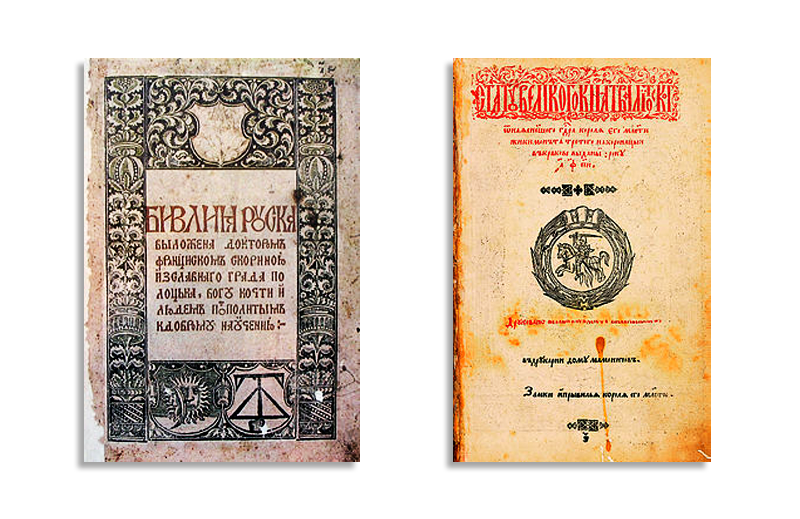The birth and development of language is conditioned by the peculiarities of history and the life of the people. The emergence and formation of the Belarusian language were inextricably linked with the history of all Slavs.
In the III millennium BC there was a Slavic ethnic community, a one Slavic people with their own language and culture. By the middle of the first millennium AD, Slavs used one language, which in science it is customary to call the Proto-Slavic or the All-Slavic. In the history of the Belarusian language the Slavic period was the longest one, from which the languages of modern Slavs retained the same vocabulary, the same phonetic patterns and features of the grammatical system.
In the 6th-7th centuries the settlement of Slavs on a large territory of Europe has been completed; as a result, three groups of Slavic tribes were formed: the eastern, western and southern Slavs. The Belarusian nationality was formed on the basis of the Eastern Slavic tribes - Kryvichs, Dregoviches and Radimichs.
During the 10th-13th centuries East Slavic peoples, including the Belarusian one, used one written (literary) language, on which quite a lot of manuscript monuments (religious, business, artistic) were created. Some of the retained East Slavic works were written on the Belarusian land by our well-known ancestors: Cyril of Turov, K. Smalacič, L. Bohša and others. The most famous monuments of the time are: "The Tale of Igor's Campaign", "The Tale of Past Years", "Russkaya Pravda".
Taking into account the availability of written monuments, the entire history of the Belarusian literary language can be divided into three main periods of its development.
The first period (10th-14th centuries) is the all-Slavonic period. This is the time of the existence and development of the Old Russian, or Old Eastern Slavonic, literary language. At the time there was no book printing, therefore all written monuments were handwritten. About a thousand different manuscripts of this period have been preserved until the modern times, half of which date back to the 14th century.
The second period of existence of the Belarusian literary language covers the 14th-18th centuries – the Old Belarusian period. Chronologically it coincides with the formation and further development of the Belarusian nation as part of the Grand Duchy of Lithuania, in which the lands of modern Belarus constituted the main part of the territory. The language of this period is usually called the Old Belarusian, or Ruthenian language. In the 15th century, it attains the highest degree of his development and acts as a separate Slavic language. From the 14th century, the Ruthenian language was a state language in the Grand Duchy of Lithuania and was used across all aspects of economic and social life.
The Statutes of the Grand Duchy of Lithuania, Ruthenia and Samogitia (1529, 1566, 1588), created in Ruthenian language, the only body of law in Europe in 16th century, is an evidence of the development of legal thought of the feudal era.
An important role in the development of culture at that time was played by book printing, the founder of which was the son of the Belarusian people, a talented scientist and educator, Francysk Skaryna. His publishing activity, started in 1517, served as the beginning of the printing of the Eastern Slavs. Great contribution to the development of the Belarusian language was made by Symon Budny and Vasil Ciapinski.
After 1569, the Grand Duchy of Lithuania in accordance with the Union of Lublin was politically subordinated to The Polish–Lithuanian Commonwealth. The Belarusian feudal nobility renounced the native language and culture. There were unfavorable conditions for the further development of the Belarusian literary language. It gradually began to be superseded from all spheres of public life. In 1696, the law was passed, according to which the Belarusian language was forbidden as a state (written) language and Polish was introduced.
In the late 17th-18th centuries the written Belarusian language was in decline. This was the final period in the long history of the ancient Belarusian literary language and it is poor in written monuments.
The period of the new Belarusian literary language falls on the 19th and 20th centuries. At the end of the 18th century, Belarus was a part of the Russian Empire. This did not bring to the Belarusian people favorable conditions for normal development of their national culture and language. In 1840, tsarism stopped the operation of the Statute of the Grand Duchy of Lithuania of 1588 in Belarus, liquidated the Greek Catholic (Uniate) Church, which led the divine service in the Belarusian language, prohibited the use of the name "Belarus" in official documents.
A long time of the decline of the Old Belarusian language led to the fact that its traditions were lost and a new literary language started to form on the basis of oral folk dialect speech instead of the written Ruthenian. In the process of its formation the main role was played by fiction. Great credit for the formation of the Belarusian literary language belongs to Vincent Dunin-Marcinkievič, Francišak Bahuševič, Janka Łučyna, Adam Hurynovič, Alhierd Abuchovič, Kastuś Kalinoŭski. In their works, more common linguistic properties, that were specific to all Belarusian dialects, were improved and fixed as a norm.










